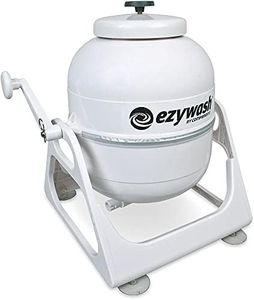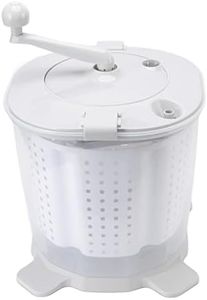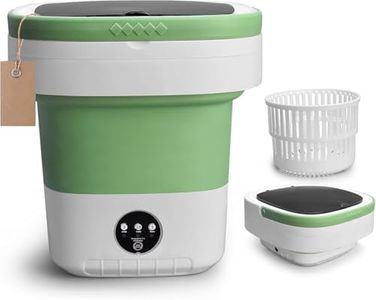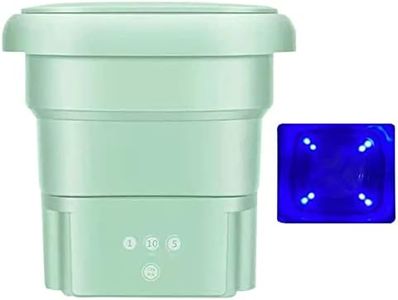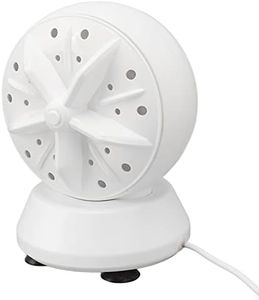We Use CookiesWe use cookies to enhance the security, performance,
functionality and for analytical and promotional activities. By continuing to browse this site you
are agreeing to our privacy policy
10 Best Portable Washing Machines
From leading brands and best sellers available on the web.By clicking on a link to a third party's website, log data is shared with that third party.
Buying Guide for the Best Portable Washing Machines
Portable washing machines are a great choice for people who have limited space, move frequently, or don't have access to a traditional washer/dryer set-up. When choosing the right portable washing machine, it’s important to understand your laundry needs and the kind of lifestyle you have. Think about where you’ll use it—like an apartment, dorm, RV, or boat—and how often you plan to do laundry, as these factors will determine what features and capacities are best for you.CapacityCapacity refers to how much laundry the machine can handle in one cycle. This is usually measured in pounds or kilograms and is one of the most important specs to consider. Smaller capacities (under 5 kg/11 lbs) are suitable for single users or those with limited space, letting you wash a few shirts or a small load at a time. Medium capacities (around 5-7 kg/11-15 lbs) can handle larger loads for couples or light daily use. Larger capacities are better if you have more laundry or wash bulkier items like bedding. To pick the right capacity, consider how often you want to do laundry and the size of your typical loads.
Type (Manual vs. Electric)Portable washing machines come in manual and electric types. Manual machines require hand-cranking or foot-pedal operation, which can save power and work well for camping or places without electricity, but require more effort. Electric models are more convenient—just plug them in, set the wash cycle, and let them run. If you want ease and convenience and have access to power, go electric. Manual machines are ideal if portability and independence from electricity are very important.
Water Source and DrainageThis spec covers how the machine connects to a water supply and drains used water. Some machines have adapters for faucets; others might need buckets or direct water pouring. Drainage can be automatic (a pump expels water through a hose) or manual (you lift and pour out the water). If you have easy access to a water tap, choose a machine that attaches to faucets. For more portable uses, consider how simple it is to fill and drain the unit. Think about your space and how convenient it is to connect and empty your machine.
Wash and Spin CyclesDifferent machines offer different types and numbers of wash and spin cycles. Basic models might have just one or two (wash and rinse), while more advanced ones have several (delicate, normal, heavy, quick, etc.). More cycle options mean you can better match your laundry type, protecting delicate items and ensuring cleaner loads. If you have a lot of varied laundry, like delicates and heavy fabrics, more cycle choices are a plus. For straightforward loads, a basic set of cycles will suffice.
Size and WeightThe overall size and weight of the machine impact how easy it is to move and where you can store it. Lighter and smaller units are perfect for tiny apartments, RVs, or frequent movers, while larger models are less portable but better for bigger loads. Make sure to measure your intended storage space and consider if you'll be lifting or rolling the machine often. Choose a size and weight that matches both your living space and your capacity needs.
Noise LevelNoise level refers to how loud the machine is during operation. Some portable washing machines can be noisier than full-sized machines, which might be a concern in shared spaces or small apartments. If you’re sensitive to noise or live with others, look for models advertised as quiet or with sound-reducing features. Match the noise level to your tolerance and living arrangements.
Energy and Water ConsumptionThis specification tells you how much electricity and water the machine uses per cycle. Efficient models will use less of both, which is great for the environment and for lowering your utility bills. Some models have eco-mode or low-water settings. If you care about sustainability or have limited water/electricity access, pay attention to these specs. Choose a machine that aligns with your utility availability and environmental priorities.

